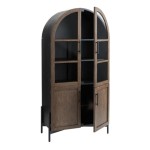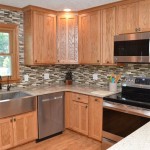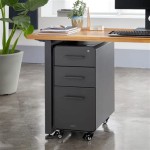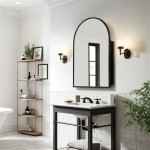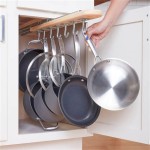White Kitchen Cabinets with Glass: A Comprehensive Guide
White kitchen cabinets have long been a staple in kitchen design, prized for their versatility, timeless appeal, and ability to brighten any space. The addition of glass to these cabinets elevates their aesthetic, adding depth, visual interest, and a touch of sophistication. This article will explore the various facets of white kitchen cabinets with glass, including the different types of glass, design considerations, practical implications, and maintenance requirements.
The enduring popularity of white kitchen cabinets stems from their ability to seamlessly integrate into diverse design styles. From traditional to contemporary, farmhouse to minimalist, white cabinets provide a neutral canvas that can be customized with hardware, countertops, backsplashes, and accessories to reflect individual preferences. The lightness of white enhances natural light, making the kitchen feel more spacious and airy, a particularly beneficial feature in smaller kitchens or those with limited natural light.
Introducing glass into white cabinets broadens their design potential. Glass-front cabinets offer a glimpse into the contents within, transforming storage into display. This design element can create focal points, break up the monotony of solid cabinet doors, and add a personalized touch to the kitchen. The use of glass also allows light to penetrate deeper into the cabinet, illuminating items within and creating a more inviting atmosphere.
Types of Glass for White Kitchen Cabinets
The type of glass selected for white kitchen cabinets significantly impacts the overall look and feel of the kitchen. There is a wide range of options, each offering unique aesthetic and functional properties. Clear glass is the most straightforward choice, providing an unobstructed view of the cabinet's contents. It is ideal for displaying attractive dinnerware, glassware, or decorative items. However, clear glass also requires careful organization and maintenance, as any clutter will be readily visible.
Frosted glass, also known as etched glass, offers a balance between visibility and privacy. It diffuses light and obscures the view of the contents, providing a softer, more understated look. Frosted glass is a practical choice for cabinets that house everyday items or those that might not always be perfectly organized. It can also add a touch of elegance and sophistication to the kitchen.
Seeded glass features small bubbles or imperfections, creating a textured and slightly distorted view. This type of glass adds a vintage or rustic charm to the kitchen, often complementing traditional or farmhouse-style designs. Seeded glass is more forgiving in terms of concealing cabinet contents, making it a good option for cabinets that store a mix of items.
Leaded glass, characterized by intricate patterns created with thin strips of lead, is a classic choice that adds a touch of formality and sophistication. Leaded glass is often found in traditional or transitional kitchens and can be customized with various designs and colors. It is particularly effective in highlighting architectural details and adding a sense of history to the space.
Other specialized glass options include textured glass, which features raised patterns or designs, and mirrored glass, which adds depth and reflectivity to the kitchen. Textured glass can add a subtle tactile element, while mirrored glass can create the illusion of more space and light. The choice of glass depends on the desired aesthetic, the level of privacy required, and the overall design of the kitchen.
Design Considerations for Incorporating Glass Fronts
The successful integration of glass-front cabinets into a white kitchen requires careful consideration of several design factors. The placement of glass-front cabinets is crucial; strategically positioning them can create focal points and enhance the overall flow of the kitchen. Typically, glass-front cabinets are used for upper cabinets, as they are more visible and provide an opportunity to display decorative items. However, glass can also be incorporated into lower cabinets, particularly those used for showcasing glassware or cookbooks.
The proportion of glass to solid cabinet doors is another important consideration. Too many glass-front cabinets can overwhelm the space and make it feel cluttered, while too few may not create the desired impact. A balanced approach is generally recommended, with glass-front cabinets used sparingly to highlight specific areas or items. A common tactic is to use glass fronts on cabinets flanking a range hood or over a sink, creating symmetrical focal points.
The style of the cabinet doors themselves also influences the overall aesthetic. Shaker-style cabinets with glass inserts offer a clean and classic look, while more ornate cabinet doors with raised panels and decorative molding can create a more traditional feel. The hardware selected for the cabinets should complement both the style of the doors and the type of glass used. Polished nickel or chrome hardware can add a touch of elegance, while brushed brass or black hardware can create a more modern or industrial look.
Interior cabinet lighting is essential for maximizing the impact of glass-front cabinets. Recessed lighting, LED strip lighting, or puck lights can be installed inside the cabinets to illuminate the contents and create a warm and inviting glow. Lighting can also help to highlight specific items or create a dramatic effect. Warm-toned lighting is often preferred, as it enhances the richness of the displayed items and creates a more inviting ambiance.
Finally, the contents of the cabinets should be carefully curated and organized. Glass-front cabinets are ideal for displaying attractive dinnerware, glassware, collectibles, or decorative items. Items should be arranged in a visually appealing manner, with attention to color, shape, and texture. Decluttering and rearranging the contents of glass-front cabinets periodically can help to keep the kitchen looking fresh and inviting.
Practical Implications and Maintenance
While white kitchen cabinets with glass offer numerous aesthetic benefits, it's important to consider the practical implications and maintenance requirements associated with them. One of the primary considerations is the increased visibility of cabinet contents. This necessitates a higher level of organization and cleanliness compared to solid-door cabinets. Items stored in glass-front cabinets are more likely to accumulate dust and require regular cleaning to maintain their appearance.
The fragility of glass is another practical concern. Glass-front cabinets are more susceptible to damage than solid-door cabinets, particularly in households with young children or pets. Tempered glass, which is more resistant to breakage, is a good option for cabinets in high-traffic areas. Protective measures, such as bumpers or corner guards, can also be used to minimize the risk of damage.
Cleaning glass-front cabinets requires regular attention to both the glass and the cabinet frames. The glass can be cleaned with a standard glass cleaner and a soft cloth or paper towel. Avoid using abrasive cleaners, as they can scratch or damage the glass. The cabinet frames can be cleaned with a mild soap and water solution. It's important to dry both the glass and the frames thoroughly to prevent water spots or damage to the finish.
The cost of white kitchen cabinets with glass is generally higher than that of solid-door cabinets. The added cost is due to the increased complexity of the manufacturing process and the cost of the glass itself. However, the aesthetic benefits of glass-front cabinets can justify the investment, particularly in kitchens where they are used to create focal points or enhance the overall design.
Despite these practical considerations, the aesthetic benefits of white kitchen cabinets with glass often outweigh the drawbacks. The added visual interest, depth, and sophistication that glass brings to the kitchen can transform a simple storage solution into a stunning design element. By carefully considering the type of glass, design placement, and maintenance requirements, homeowners can create a white kitchen that is both beautiful and functional.

White Kitchen Cabinets With Glass Doors Cabinet Built In Buffet

How To Style Glass Kitchen Cabinets Sanctuary Home Decor

A Touch Of Glass

31 White Cabinets With Glass Doors You Need In Your Home

Ideas And Expert Tips On Glass Kitchen Cabinet Doors Decoholic Cabinets

26 Glass Kitchen Cabinets Clear Frosted Modern Cabinet

How To Style Glass Kitchen Cabinets Sanctuary Home Decor

How To Make Your Kitchen Beautiful With Glass Cabinet Doors Heather Hungeling Design

Making The Most Of Glass Cabinet Doors

J Collection Wallace Painted Warm White Shaker Assembled Wall Kitchen Cabinet With Glass Door 18 In W X 35 H 14 D Dswg1835 L R Wa The Home



